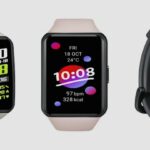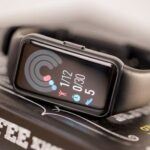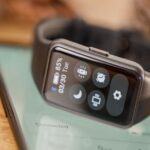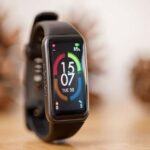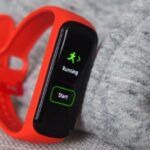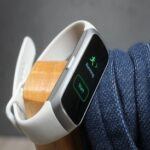Maintaining a good BMI.
A healthy BMI means we maintain an optimum weight. Of course, some effort needs to be taken to achieve a great BMI. If your BMI is not where you desire it to be, you are overweight and should find ways to lower your weight, through diet and exercise. You may want to reduce your food (caloric) intake and increase your exercise. You are at increased risk for a variety of illnesses at your present weight. You should lose weight by changing your diet and exercising more. For starters, exercise should be at least 60-90 minutes for three days in the week. Staying hydrated and eating a balanced diet are equally important.

Apps to monitor workouts.
Nowadays, there are numerous apps to assist in monitoring the progress of workouts. Running, jogging, biking—it does not matter how you exercise, keeping track of your workouts is essential. Apps allows you to set goals, uses a built-in GPS to record routes in real-time, and even lets you share your successes with your friends. More often the fitness tracker is incorporated in your smartwatch which is linked to your hand phone by Bluetooth.
Fitness Trackers.
Choosing the right fitness tracker app is just as important as choosing your smart watch. After all, the algorithms that measure and analyze your data are simply sophisticated– not just the sensors themselves.
Often, they offer a better experience with more reliable and interesting insights. However, they cost more because you are paying for the research and development of the software as well as the hardware. If you want to move on to a healthy lifestyle, a great motivator would be using a compelling app.
However, for basics such as step counts, core heart vitals and hours of sleep, the ever-expanding range from Chinese brands such as Amazfit, Xiaomi and Huawei are now major contenders.
Comparison.
Today we are reviewing only 2 brands of fitness trackers:
- Honor Band 6 by Huawei
- Samsung Galaxy Fit 2
Honor Band 6 by Huawei
- Huawei, the Chinese tech giant introduced it to the market in November, 2020.
Key Features
It features a 1.47-inch, 194 x 368 resolution AMOLED touchscreen display – It goes head-to-head with the likes of the Huawei Watch Fit, which offers a bigger screen than traditional trackers like the Fitbit Charge 4.
It is water resistant up to 50 metres making it suitable for swimming and showering.
In terms of tracking and biometrics there’s Huawei’s TruSeen 4.0 optical heart rate monitor to take care of continuous monitoring and tracking during exercise with 10 sports modes supported.
No GPS is provided, which could be a downside, but not important for everyone.
It will also be able to take blood oxygen measurements via the built in SpO2 sensor, and it has accelerometer and gyroscope motion sensors on board to track activity.
There is a big case and a decent battery life from the 180mAh battery. The Band 6 offers 14 days battery life with 10 days “heavy use”, seems promising and impressive. The battery will plug into any USB-A port and attaches magnetically to the tracker. A full charge takes a little over an hour, but the included fast charge tech means that just ten minutes on charge should net you another three days or so of use – perfect if you only discover at the last minute that it is running low.
With 5 ATM water-resistance, you can wear this in the pool (with swim-tracking supported) or keep it on when you shower.
The biggest change from 2019’s Honor Band 5 is the jump to a much larger 1.47in AMOLED display. It is big, bright – and colourful – without making the tracker itself feel too bulky. Plus, the extra screen space makes the whole experience of moving around menus much more enjoyable. The bigger screen means a move to a case that’s 43mm tall. It is a bit chunky at 11mm thick but weighs a mere 18g.
The body of the tracker is black, with an Honor logo inscribed on one side, and a solitary button on the other. The silicon strap is unfortunately non-removable, with a choice of black, grey, or pink.
| Pros | Cons |
|
|
Custom Software
The Band 6 runs on Honor’s own custom software, which really means it runs on Huawei’s software. Still, thanks to the larger display this OS is at its best here, with plenty of space on the screen to make every screen comfortable to read and navigate.
The single button is used to access a few quick shortcuts and start workouts, and otherwise you swipe up to access settings, or across to move between the default watch face and screens including your heart rate and stress scores, the music player, and activity goals.
App – the biggest giveaway that this was originally designed along with Huawei. Honor has not yet released its own health app, and even if it does it’s not clear if the Band 6 would support it or continue to use Huawei’s.
In any case, this is a perfectly functional app, if not the most attractive around. The tiled home screen gives you access to all your health and fitness data, while the Exercise tab gives you a few handy guided run options.
The app can be linked to Google Fit, Apple Health, and MyFitnessPal for data sharing, but that’s it – no other exercise or health apps are supported.
Selling Price
The key selling point of the Honor Band 6 is the price. At just £43.99/$61.09 this is one of the most affordable trackers on the market. You can grab it right now from Amazon.
It undercuts the £60 Huawei Band 6 (unavailable in the US), which is almost exactly the same other than an extra band color and more exercise options, while you’d have to spend at least double for the closest comparable Fitbit.
The Honor Band 6 is not perfect, but it is enough for a beginner, to make it a decent option for anyone looking for an affordable fitness tracker. It has a range of tracking options, a big screen and excellent battery life, plus a 5 ATM water-resistance rating. Overall, the Honor Band 6 is light and comfortable enough that you can wear 24/7 for at least six weeks, taking advantage of the waterproofing and sleep-tracking so that it is only taken it off to charge it up.
The Honor Band 6 delivers an awful lot for the price and makes it hard to justify spending more.
Samsung Galaxy Fit 2

The Korean tech giant introduced it in September 2020.
Key features.
- 1.1-inch AMOLED touchscreen display
- Works with Android phones and iPhones
- Tracks steps. Auto workout tracking for walking, running, dynamic workout
- 5 ATM (up to 50 metres) waterproof rating
- Accelerometer-based workout and sports tracking
- Automatic sleep monitoring
- Includes heart rate sensor and monitor.
- Displays notifications.
- 15 days battery life (typical usage)
| Pros | Cons |
|
|
The Fit 2 boasts a 1.1-inch AMOLED screen partnered up with a slimmer band that fits well compared to its predecessor.
For fitness tracking, you have an accelerometer and a gyroscope sensor to track movement like steps, and which are also used for the onboard sports modes.
Like most trackers, that accelerometer is used for enabling automatic sleep monitoring too. There is an optical heart rate monitor used for continuous monitoring and real-time tracking during exercise.
Automated workout support for activities including running, elliptical and indoor rowing, are available but there are accuracy issues. This Samsung fitness tracker is fit for the pool but does not track your activity in the water.
There’s no SpO2 sensor, and no altimeter to track elevation like stairs climbed. though the lack of any form of GPS support means you are relying on motion sensors to accurately track outdoor activities.
There are dedicated modes for running, cycling, pool swimming and a general outdoor workout mode. There’s also automatic workout tracking for five activities.
On that AMOLED display, you can take control of your music, view notifications and send quick replies if you are an Android phone owner. There are also a big choice of watch faces to select.
Like most fitness trackers these days, Samsung also tries to squeeze in some smartwatch features, besides it slim silicone band, in black or scarlet.
With notifications, you can swipe right from the main watch screen and see a maximum of four notifications. They are displayed as app icons, which you can tap to expand.
You can scroll through entire tweets, though emails will just give you the subject line. You can respond to notifications for quick replies that can also be customized.
For battery life, you can expect around the seven-day mark depending on usage. The first Galaxy Fit packed a 120mAh battery, which promised seven days of battery life. The Fit 2 promises to go further than that. It’s moved to a bigger 159mAh battery that Samsung says is capable of delivering up to 15 days in typical use and 21 days in low usage.
Most people will want to track sleep and probably monitor heart rate continuously, along with turning on notifications, tracking workouts and having the screen at mid brightness level. This tracking would still going to continue for seven days, with room to go further if you are not tracking exercise every day or continuously monitoring heart rate.
In general, it does not drain battery in any undesirable way and it matches with other budget trackers at this price point.
Special Features
Smartwatch features like notification support and the ability to switch out watch faces on the gorgeous 0.95-inch AMOLED touchscreen display are still provided. However, there are no music player controls, payment features or Bixby support, but considering the price one does not expect such features. Music controls can be found when you swipe down from that watch face to get to the settings. You’ll see current song playing and can skip back or forwards and control volume.
You can also add the music controls as a widget if you do not want to dig through the settings to find them. What is slightly disappointing is that it does not appear that you can access those music controls during a workout.
There are 12 of those widgets in total and they include things like weather forecasts, access to your calendar, setting up alarms and a hand wash timer, which is welcomed given the current situation.
Things you will not get here that you will find on Samsung smartwatches include payments, apps and a music player. Though that is not massively surprising given the size and price of this tracker.
It might not be awash with smartwatch features, but what does make the cut worked for us. Notifications do not feel horribly cramped and watch face support is solid too. The inability to control music during exercise was disappointing though.
How Samsung classifies typical usage in fine print on its website is when you’re not wearing it to track sleep. That low usage battery is based on also turning off heart rate tracking and automatic exercise tracking.
There is no form of GPS support.
You need to download the Samsung Health phone app to dig deeper into your data. It is here where you can do things like manually log weight, water, blood pressure and blood oxygen.
Samsung has streamlined the look and bring the price point down to make it much better value for money.
Selling Price
Price when reviewed: $49 to $59. Still a good budget choice.
Available at Amazon.
Conclusion
Personally, I would be tempted to buy the Samsung Galaxy Fit 2 tracker for its compact size and offering more settings, but then the Honor 6 tracker is also value for money for the same class of watches and fitness trackers.

